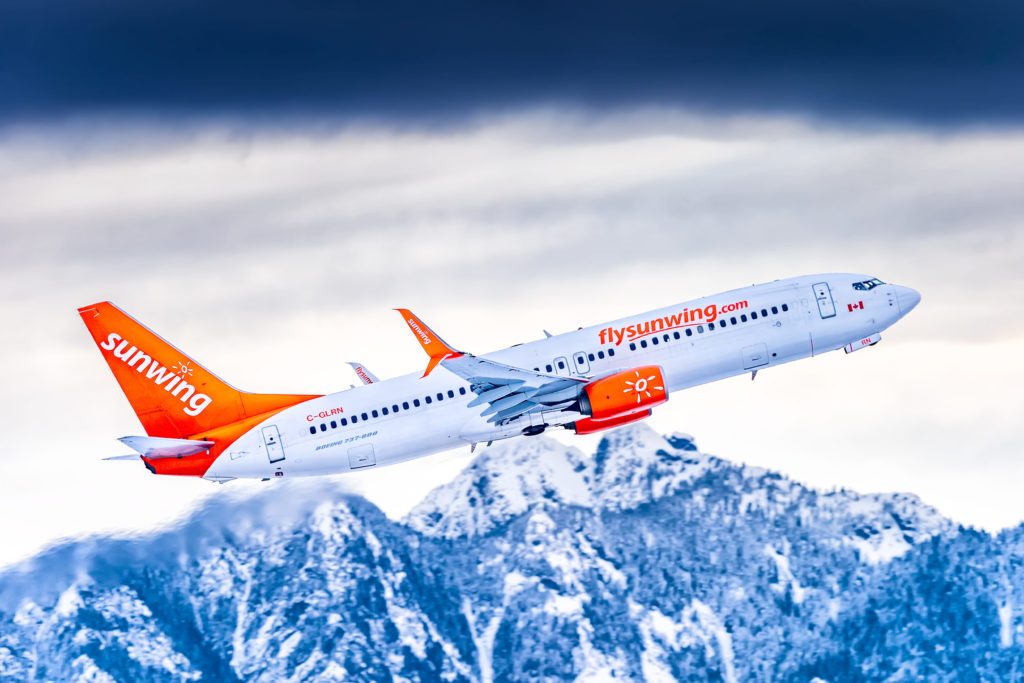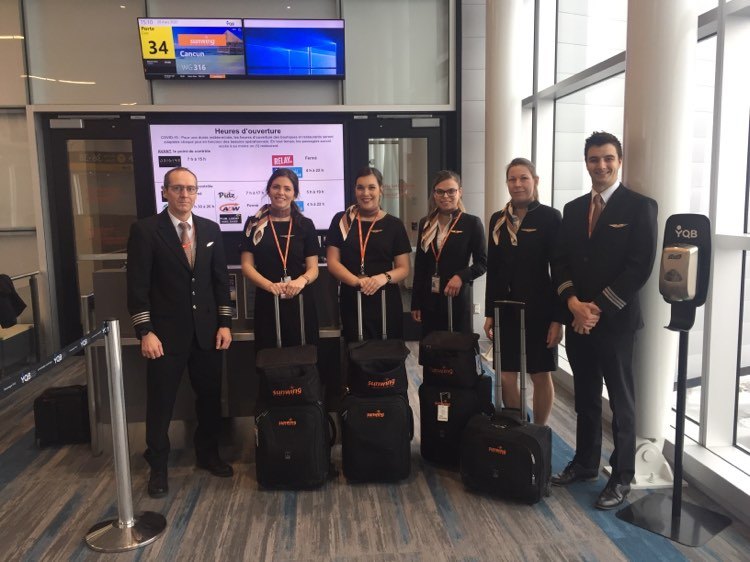Estimated reading time 7 minutes, 29 seconds.
On March 16, Prime Minister Justin Trudeau announced that Canada would be closing its borders to non-residents. This development in the COVID-19 story left Canadian airlines in a state of limbo, as it became clear that business would be sharply affected by the pandemic and its resulting fallout.

For most Canadian carriers, focus shifted from transporting customers to international destinations, to bringing Canadians home from abroad — answering the call to serve the public in the face of the crisis. Sunwing Airlines was one of the first to step up.
On that initial morning of the 16th, Sunwing announced it would be repatriating over 500 Canadians on four flights that day alone. By the following Monday, Sunwing had brought home over 60,000 Canadians on over 400 flights, including over 3,300 stranded Canadian non-Sunwing customers for free.
Skies chatted with Len Corrado, Sunwing’s vice-president of Commercial Operations, to understand how these flights were handled — from the swift planning stage to the measures taken by passengers and crews to avoid spreading the virus.
For Sunwing, there was no doubt the carrier would step up and help during the crisis. “It’s the Canadian thing to do. We help out,” said Corrado.
According to him, the government’s guidance and assistance in the lead-up to the border closure helped to make repatriation efforts run as smoothly as possible.
“The Canadian government, and all branches of government, whether it’s Transport Canada, public health, policy, were phenomenal through this,” he explained. “The communication leading up to this and their availability to assist and support us with the required emergency protocols and clarifications as well as their ability to intervene and give us direction was phenomenal. There was an overall collaboration in government that was fantastic.”
After receiving Transport Canada guidelines on how to handle passengers during the crisis — including limiting cabin service and an enhanced effort to enforce infectious protocol standards — the airline went to work.
Sunwing’s repatriation flights, according to Corrado, were based on the airline’s existing schedule and planning involved collaboration with the airline’s partners to ensure proper communication between customers, ground handlers and airport employees about the next steps to bring Canadians home.
Since Sunwing is a vertically integrated travel company, and is more than strictly an airline, it was well suited to get the message out. The company operates transfer bus services in its destinations and has destination representatives stationed at the hotels in its network, allowing stranded passengers to access the information they needed to get to the airport in a prompt, safe manner.
“We let our passengers know that we’re with them every step of the way,” Corrado said, “They were well informed about what was going on and what our plans were, and for people who were there for a longer stay, it was easy to get ahold of them and say, ‘Hey, we know you’re staying an extra week but with the situation being what it is, you should get home and here’s the flight you need to get to.’ So, that’s a huge advantage for us in these sorts of situations.”

Getting the message out was fairly straightforward, but there were still some logistical issues, as Canada wasn’t the only country that had closed its borders to stop the spread of the virus.
That was the case in Roatán, Honduras, where Sunwing was set to operate two repatriation flights to both Toronto and Montreal, bringing home roughly 360 passengers. The day before, Honduran president Juan Orlando Hernández had decided the country would be closing its borders — effectively stranding the Canadians waiting to be brought home.
“Some of them didn’t expect that repatriation flights would be happening because of this and the severity of the situation,” Corrado said.
But due to Sunwing’s ground operations team’s good standing with senior Honduran government officials, the Canadian carrier received an exemption and was allowed to fly in to retrieve those who were stranded.
“It was just a massive round of applause when these people got into the airport and watched our aircraft land and pull up to the gates,” he added.
As for the aircraft themselves, Corrado said the company enhanced its grooming protocol as early as mid-January as things developed, roughly two months before the border closures. Each aircraft was subjected to a “deep groom” every night after completing its flights for the day and in-cabin service was effectively limited to providing water.
Though passengers weren’t tested for the virus before boarding the flights, anyone displaying symptoms leading up to the flight would have to be denied boarding — a protocol put in place by Transport Canada shortly after repatriation efforts began. According to Corrado, though, these were measures already in effect from the airline itself. “We were just building on what was already standard for us,” he said.
Back home, repatriated Canadians couldn’t be more thankful. In a testimonial to the company, a customer named Randy Fuhr noted “how elated we were to learn Sunwing would be carrying us back to Regina in the midst of all the hysteria happening around us.
“Thank you Sunwing for standing tall and taking action to ensure your customers got home, and kudos for offering free rides to any Canadian in need,” Fuhr said.
Fuhr wasn’t the only one with high praise for the company’s efforts. In another testimonial from a customer named Scott Pittman, a Sunwing representative spotted him and his party waiting in the airport, asked if they’d like a free seat home and whisked them through security and onto the plane in under half an hour.
While Sunwing received well-deserved praise for its efforts, Corrado once again stressed how significant and helpful the government was during the process.
“I can’t stress enough the importance of, number one, government collaboration, but from an airline perspective, the work we did prior to these events happening to build relationships,” he explained. “At three o’clock in the morning you can get a hold of a senior decision-maker and a government airport authority or transportation authority and get the support you need to get the work done.”








